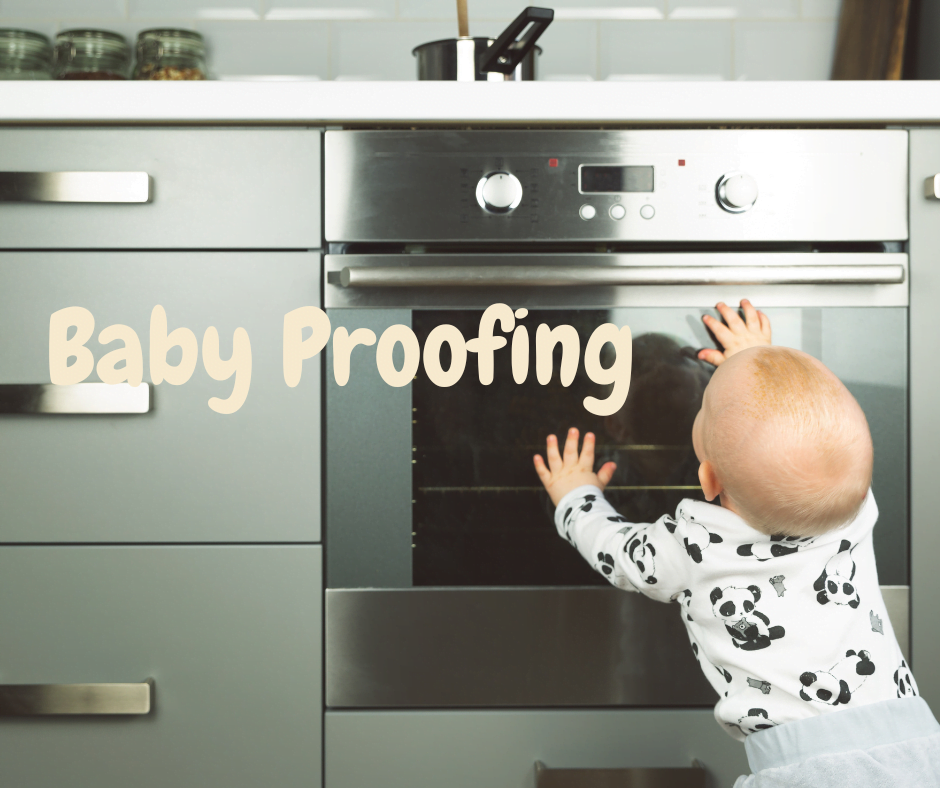**Comprehensive Baby-Proofing: Safeguarding Your Child from Every Angle**
Baby Proofing
Welcoming a new addition to your family is an exhilarating experience, accompanied by a host of responsibilities. Among these, ensuring your baby’s safety takes center stage.
As your curious and growing bundle of joy begins to explore the world around them, it’s crucial to create a safe environment that minimizes potential hazards.
Baby-proofing your home involves thoughtful preparation and careful consideration of every aspect of your child’s surroundings. In this comprehensive guide, we’ll delve into five important areas of baby-proofing to safeguard your child from various aspects of life.
**1. Home Safety Measures:**Baby Proofing
Start by evaluating your home from a baby’s perspective. Begin with these steps to create a safe haven for your little one:
– **Crawl Through Their Eyes:** Baby Proofing
Get down on your hands and knees to see the world from your baby’s viewpoint. This will help you identify potential hazards like sharp corners, reachable electrical outlets, and low-hanging cords.
– **Secure Furniture:** Baby Proofing
Anchor heavy furniture, bookshelves, and TVs to the wall to prevent tipping accidents. Babies love to pull themselves up, and unsecured furniture can pose serious dangers.
– **Childproof Cabinets and Drawers:**
Install childproof locks on cabinets and drawers containing cleaning supplies, sharp objects, or medications. This prevents curious hands from accessing potentially harmful items.
– **Gates and Barriers:**
Use safety gates to restrict access to stairs, kitchens, and other areas that might be dangerous for a baby. Make sure the gates are securely installed and meet safety standards.
**2. Electrical and Appliance Safety:** Baby Proofing

Electrical hazards are a major concern when baby-proofing. Follow these steps to ensure your baby is safe around electrical outlets and appliances:
– **Outlet Covers:**
Place outlet covers or caps on all unused electrical outlets. Babies often have an uncanny ability to find and explore outlets with their fingers.
– **Cord Management:**
Keep electrical cords out of your baby’s reach. Use cord organizers or hide cords behind furniture to prevent accidental tugging.
– **Appliance Locks:**
Install locks on appliances like ovens, refrigerators, and dishwashers. These locks prevent your baby from opening doors that might lead to injury or messes.
– **Monitor Heat Sources:**
Keep an eye on radiators, heaters, and other heat sources. Use barriers to prevent your baby from getting too close and experiencing burns.
**3. Kitchen Safety:** Baby Proofing
The kitchen can be a haven for potential hazards. Implement these safety measures to create a child-friendly cooking environment:
– **Stove Guards:**
Install stove guards to prevent your baby from reaching up and grabbing hot pots and pans.
– **Lock Cabinets and Drawers:**
Use childproof locks on kitchen cabinets and drawers containing sharp objects, glassware, or toxic cleaning supplies.
– **Secure Appliances:**
Keep appliances like blenders, toasters, and microwaves out of reach. Unplug and store them when not in use.
– **Avoid Hot Liquids:**
Be cautious when handling hot liquids around your baby. Use the back burners on the stove and turn pot handles inward to prevent accidental spills.
**4. Bathroom Safety:**
Bathrooms harbor a host of potential dangers for babies. Implement these precautions to ensure your child’s safety:
– **Lock Medicine Cabinets:**

Store medications and toiletries in locked cabinets, out of your baby’s reach. Even seemingly harmless items can be dangerous when ingested.
– **Use Non-Slip Mats:**
Place non-slip mats in the bathtub and on bathroom floors to prevent slips and falls.
– **Secure Toilets:**
Consider installing toilet locks to prevent your baby from accidentally falling in or accessing toilet water.
– **Manage Water Temperature:**
Adjust your water heater to ensure the water temperature doesn’t exceed 120°F (48.9°C) to prevent scalding.
**5. Window and Blind Safety:**
Windows and blinds can pose serious risks to curious babies. Protect your child from these potential hazards:
– **Install Window Guards:**
Use window guards on windows located above the first floor to prevent falls. Make sure the guards have quick-release mechanisms for emergency exit.
– **Cordless Blinds:**
Opt for cordless window coverings or use safety tassels and cord stops to eliminate the risk of strangulation.
– **Secure Furniture Near Windows:**
Ensure that furniture is kept away from windows to prevent your child from using them as a climbing aid.
– **Use Window Stops:**
Install window stops to limit how far windows can be opened. This prevents your baby from accidentally falling out.
In conclusion, baby-proofing your home is a multifaceted process that involves careful consideration of various aspects of your child’s environment.
By taking steps to secure furniture, electrical outlets, appliances, and high-risk areas like kitchens and bathrooms, you can create a safe and nurturing space for your baby to grow and explore. Remember that every child is unique, so it’s important to tailor your baby-proofing efforts to suit your child’s developmental stage and individual needs.
With diligence, preparation, and a keen eye for potential hazards, you can provide your baby with the secure and loving environment they deserve.
